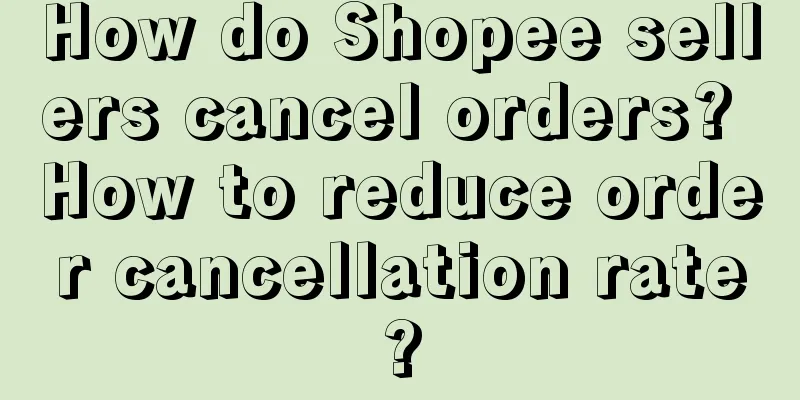Year-end summary: You need to be as cunning as a master

At the end of each year, many people in the workplace will enter an inevitable topic: year-end summary Is the year-end summary a formalism? No, the year-end summary is used as a basis for making future plans. For the boss: After working hard for a year and doing a lot of things, you need to know which ones are fruitful and which ones are ineffective, so as to adjust the focus of work and continue to do the right and effective things, so as to reallocate internal and external resources of the company. For leaders: Usually there are too many people under them, and they need to find out who is the most useful and most promising person in the team, because this affects their performance output. They should give opportunities to outstanding talents and eliminate mediocre talents, so as to build a stronger talent pool. For myself: I can see the growth trajectory of the year, whether my skills and experience have increased, whether I have a deeper understanding, and whether I have managed my work value well. If the management is right, the value is high, and promotion is not far away. If we really categorize the types of jobs, you will find: Whether it is daily, weekly, monthly reports or various meetings and daily communication, we spend almost 80% of our time communicating and transmitting information. Each person will have different levels of differences due to the frequency, habits, logic, etc. of communication. Being able to do a good job of value management in these tasks will largely determine the level of your development in the workplace. The year-end summary is a form of work value management. You don’t have to expect someone who can’t even write a good year-end summary to do a good job in his daily work. People who really “get work done” will manage the value of their work well. The management of work value can be broken down into "value extraction" and "impression management" at work. In addition to explaining these two parts, this article will also give you a reference for the content structure. 1. Value ExtractionAt the "value extraction" level of the year-end summary, the contents to be extracted include business value, management value, and personal growth value. 1. Business Value
Value extraction logic: This part mainly presents the degree of your direct and indirect influence on the company's business and highlights your importance. The number of xx-level projects you have participated in shows that you have further developed your problem-solving ability, and the company can be assured to entrust you with more and more important things in the future. Among them, performance output is the most core content, so you must get straight to the point and quickly help the company evaluate the results. Other aspects such as cost reduction and efficiency improvement, process optimization, and delivery improvement all have direct impacts on the business, which further demonstrates your specific contributions as the business develops. Support for other things reflects your collaborative ability and potential resource value. 2. Management value
Value extraction logic: The content of this part should reflect one’s own management value. In terms of performance management, when we write, we first focus on the results of goal achievement, which mainly reflects that most of the members of your team have achieved the corresponding indicators and can produce results in employing people and doing things. In terms of talent echelon, the levels of indicators such as entry, resignation, regularization and promotion reflect whether you are good at managing a team. A stable team, high entry rate, low resignation rate, large number of regularizations and promotions indicate that your team is growing rapidly and you have the potential to be responsible for a larger team. This part is your value in managing people. In terms of training support, it reflects what kind of empowerment you have provided to the team, whether you can accumulate corresponding knowledge assets and help the team get results faster. This part is the value of your management. 3. Personal growth value
Value extraction logic: The content of this part should reflect one's own growth value, and the core is to show that I am competent, suitable, and have potential. When writing about personal growth, you need to pay attention to the core logic of "I am competent". This part is actually a comparison with past standards. Explain what you have done in the past period of time, what results you have achieved, changes in your status, etc. There are two logics here. The first is from state A to state B, and the second is what I output based on what I have accumulated. When writing a self-evaluation, the core logic of "I am suitable" is to match it with the current standards. It is recommended to extract the requirements and standards of the target position, and then explain what level you have achieved, what you have done well, and what you have not done well. When writing future plans, the core logic of "I have potential" is to set requirements for future standards. This part includes goals for work advancement and personal growth, and then add corresponding action plans. 2. Impression ManagementAt the level of "impression management", it actually means "setting up" for the results you have achieved, making them more three-dimensional and perceptible. What needs to be done here include establishing a comparison dimension, highlighting effect figures, increasing evaluation perception, and summarizing experience. 1. Establish a comparison dimension
Impression management logic: Evaluation comes from comparison. Choosing the appropriate comparison method can better amplify others' perception of your achievements. For example: the Knowledge Planet was launched with 0 cost, more than 8,000 copies were sold within 15 days, and the cash flow exceeded 500,000+. When you see this item, you may not feel it so strongly and the result will be just average. However, when we add an industry standard for comparison, we have a stronger perception. After modification, it becomes: the overall fission level reaches 14 levels, and the distribution conversion rate is nearly 30%, becoming an industry-wide screen-sweeping case. (Judgment criteria: the fission propagation level reaches 10 levels, and the overall distribution conversion rate is 20%. It is more difficult to meet both conditions at the same time) 2. Highlight the effect numbers
Impression management logic: The first logic: Numbers don’t lie, they just divert attention For example: "The overall growth is not obvious, but the conversion rate is relatively good, reaching 30%. We are doing well in this regard. We only need to optimize the front-end traffic and our performance can reach xxx." From focusing on the whole to focusing on the details. The second logic: Conditional restrictions can better highlight ability For example: "The number of fans increased by 10,000" and "The number of fans increased by 10,000 in 3 days". 3. Increase evaluation perception
Impression management logic: The logic here is to lend identity and give testimony. The higher the identity, the more stable the evaluation. 4. Summarize experience and accumulate experience
Impression management logic: What stands out is that you have accumulated knowledge assets, are good at summarizing, and have strong learning ability. 3. Content structure of the year-end summary1. Presentation of core workIt is equivalent to an overview of the work for a year. If there are not many projects involved, just present them on one page to directly reflect the results. 2. Structure and trends of core indicatorsFor example, for the fan indicator, I will present the number of fans, fan structure, and fan growth trend; If it is a communication indicator, I will present the number of readings, reading sources, and focus on extracting the key popular content and give reliable conclusions; If it is a revenue indicator, it will present the revenue structure and the revenue situation of each channel; Each indicator is compared to the previous year’s target to highlight achievement of the goal. Note: These are the core indicators, so basically there is one indicator per page. 3. Team managementWhen it comes to performance management, a team performance summary will be provided to help leaders quickly understand how the team is achieving its goals. When it comes to organizational management, the output will be around team management, what corresponding systems there are, and what improvements have been made. When it comes to human resources, the overall situation of the team, its structure, and relevant data on team development will be output. 4. Project-based workDescribe the project modules separately, corresponding to the output, highlights, deficiencies, and improvement plans of each project. The number of pages will be matched according to the specific project situation. 5. Future development planIncluding personal, organizational and project-related. Finally, since everyone’s position has different levels, in practical application, we can combine the value extraction and impression management mentioned above to summarize. The following are the focus points of different objects, which need to be adjusted according to the reporting object (ps: This part comes from the content shared by Uncle Qiuye) Direct supervisor: I want to hear your thoughts on the problems you found at work and your solutions Superior: I want to know your goals and specific measures for future work. Supervisor: I want to know the highlights that can be used for promotion in your work External experts: I want to know the innovations and specific achievements in your work. Serve customers: Want to know the solutions and cooperation requirements for problems encountered at work The above is today’s sharing. Finally, I hope you can regain your confidence, manage your value well, and gain something. Author: Zhizhong WeChat public account: Shixian Operation (ID:yyshixian) |
<<: 9700+ words super detailed package card drainage analysis (including templates and cases)
Recommend
I played the role of "evil mother-in-law" in the domineering boss's short play: slapping, pulling hair, staying up late, and earning 4,000 in 5 days
Uncovering the behind-the-scenes life of elderly a...
Why can’t you learn from Luckin’s private domain? A private domain director’s soulful reflection
Why is it that Luckin Coffee can be so successful ...
Amazon brand sellers can view specific ASIN search query performance data
Amazon US announced that brand sellers can now use...
Wufangzhai, a “marketing genius” among traditional brands
How did Wufangzhai transform from the king of zong...
Building a business prediction model is a great method
In data analysis and business decision-making, bui...
What's the best seller on eBay UK? Product selection guide
The development speed of cross-border e-commerce i...
Is the price of Shopee Taiwan website US dollars or Taiwan dollars? How is the price set?
Everyone has a different understanding of cross-bo...
How to optimize Amazon listings? Basic optimization guide
The main purpose of Listing basic optimization is ...
How to reverse calculate Xiaohongshu’s traffic budget?
Master the art of precise delivery on Xiaohongshu ...
What are the reasons for the decline in Shopee sales? How to analyze it?
On the Shopee platform, many merchants will encoun...
Shared bicycles will continue to rise
From the starting price of 50 cents to the current...
When many apps enable automatic renewal
I believe that everyone has more or less encounter...
Local life dynamics: Meituan is on guard, multiple platforms are attacking from all sides, and e-commerce giants are entering the game
As Internet giants have turned their attention to ...
Dissecting the “algorithm logic” of Douyin and Kuaishou
This article introduces the algorithm mechanisms a...
What does Shopee's delivery days mean? What are the requirements?
When operating a store on the Shopee platform, you...









